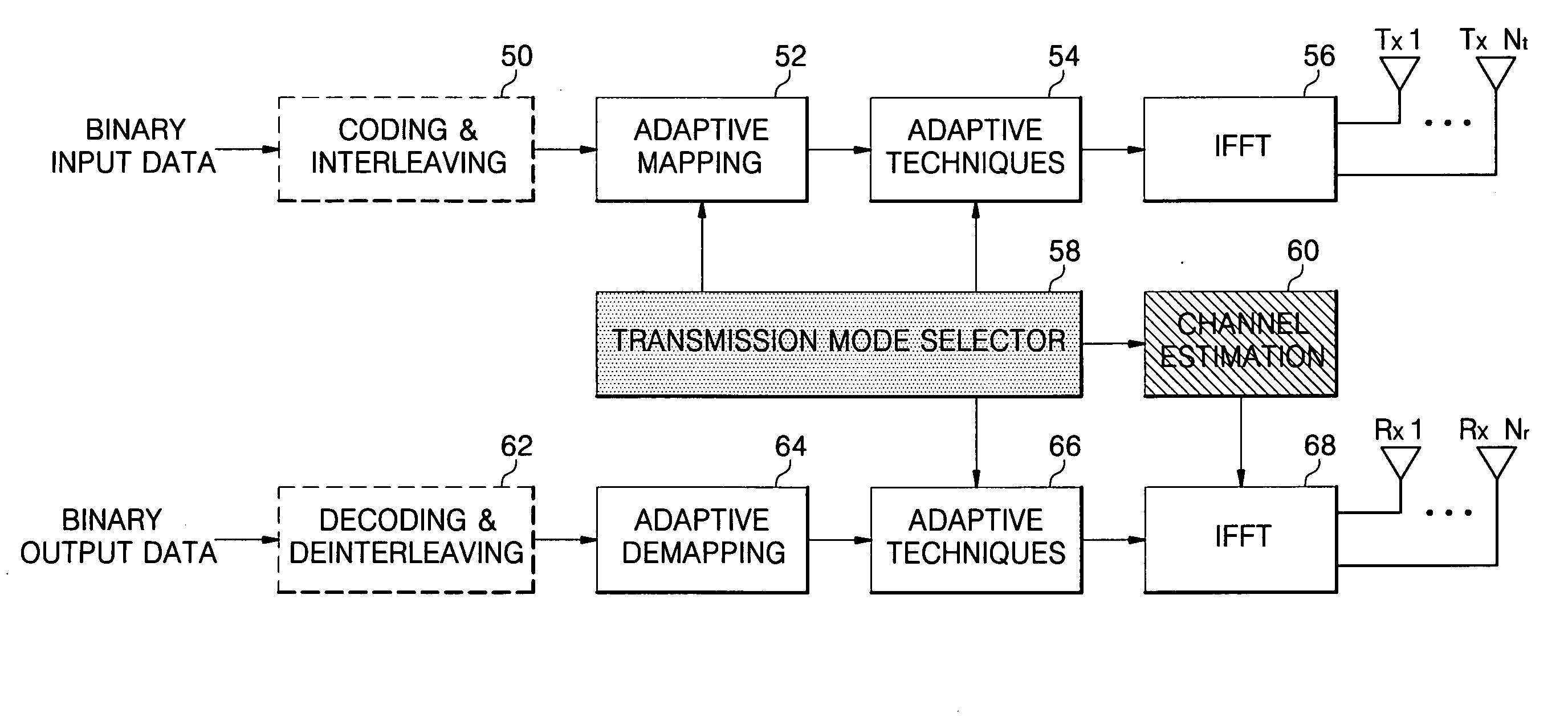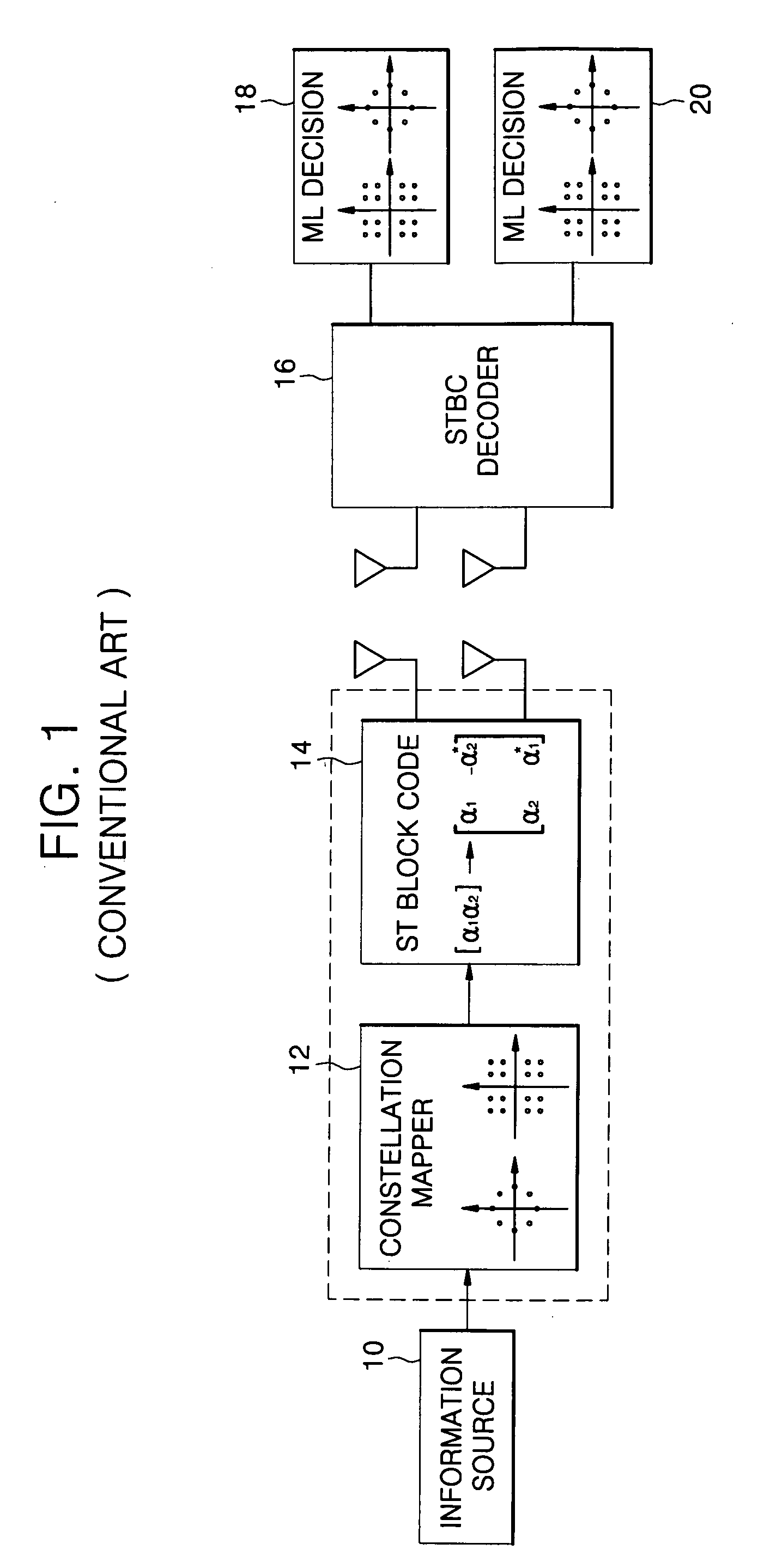Method of adaptive transmission in an orthogonal frequency division multiplexing system with multiple antennas
a technology of orthogonal frequency division and multiple antennas, applied in orthogonal multiplex, multiplex communication, channel coding adaptation, etc., can solve the problems of high signal-to-noise ratio (signal-to-noise ratio) environment, high snr (signal-to-noise ratio) waste of throughput performance of mimo diversity techniques, and blast suffers from loss of ber (bit error rate performance) performan
- Summary
- Abstract
- Description
- Claims
- Application Information
AI Technical Summary
Benefits of technology
Problems solved by technology
Method used
Image
Examples
Embodiment Construction
[0025] Preferred embodiments of the present invention will now be described in detail with reference to the accompanying drawings.
[0026] A MIMO-OFDM system with Nt transmitting and Nr receiving antennas is considered. The OFDM data sequence of n-th transmitting antenna is represented as Sn=[Sn(0)Sn(1) . . . Sn(K−1)]T, where Sn(l), (n=1, 2, . . . , Nt) is the complex baseband signal of the l-th subcarrier and K is the length of the OFDM data sequence. Because the symbols are transmitted from Nt transmitting antennas in parallel, the Nt×K data sequence matrix is x=[X1 X2 . . . XNt]T.
[0027] A flat fading channel on each subcarrier and independent identically distributed (i.i.d) fading among different subcarriers are assumed in our analysis. The time delay and phase offset of the each antenna are assumed to be known, i.e., tracked accurately. The overall channel H can be represented as Nr×Nt complex matrix and the baseband received signal at j-th receiving antenna is Rj(l)=∑i=1NtHj...
PUM
 Login to View More
Login to View More Abstract
Description
Claims
Application Information
 Login to View More
Login to View More - R&D
- Intellectual Property
- Life Sciences
- Materials
- Tech Scout
- Unparalleled Data Quality
- Higher Quality Content
- 60% Fewer Hallucinations
Browse by: Latest US Patents, China's latest patents, Technical Efficacy Thesaurus, Application Domain, Technology Topic, Popular Technical Reports.
© 2025 PatSnap. All rights reserved.Legal|Privacy policy|Modern Slavery Act Transparency Statement|Sitemap|About US| Contact US: help@patsnap.com



